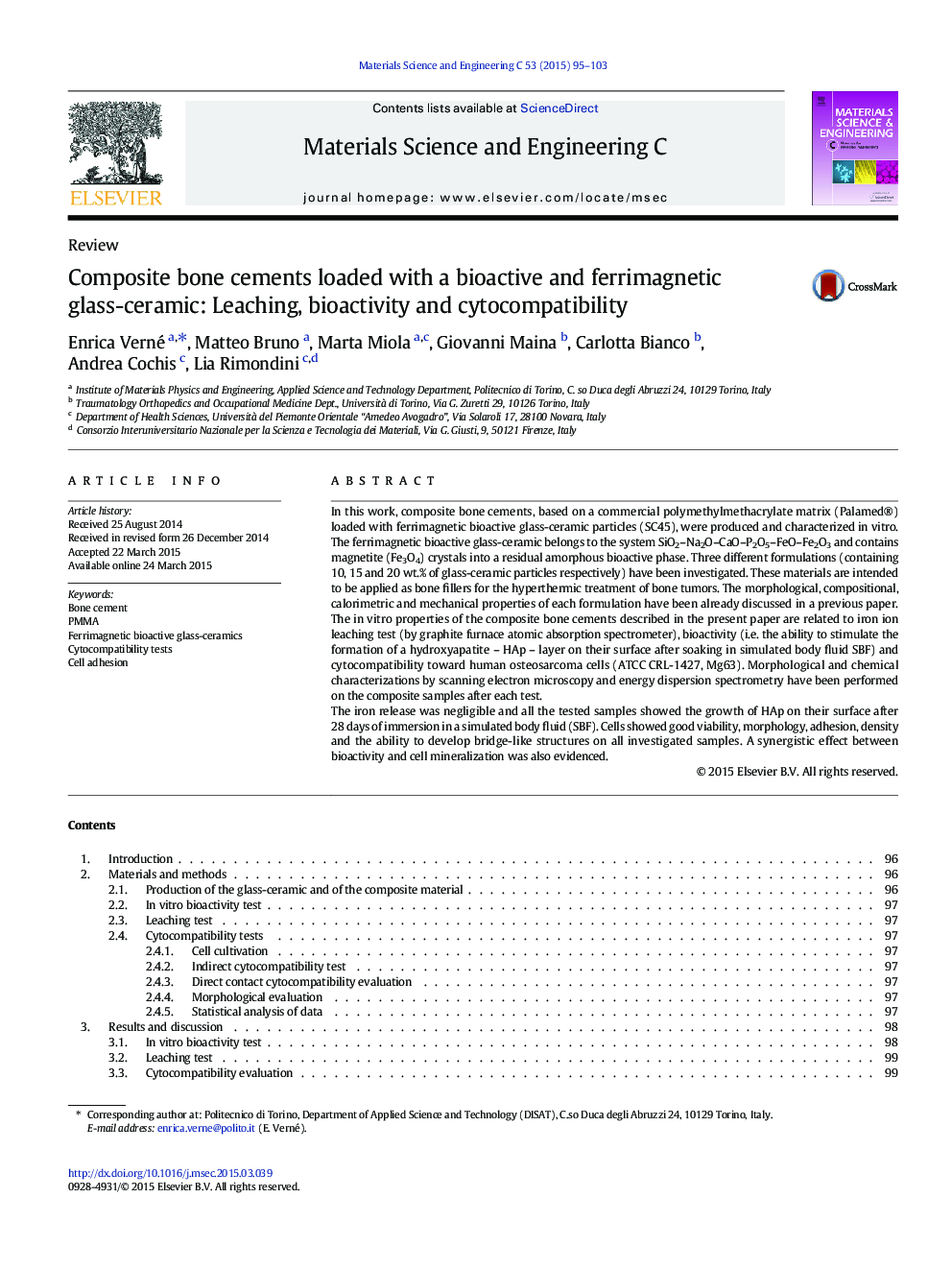| کد مقاله | کد نشریه | سال انتشار | مقاله انگلیسی | نسخه تمام متن |
|---|---|---|---|---|
| 1428071 | 1509168 | 2015 | 9 صفحه PDF | دانلود رایگان |
• An in vitro biological characterization was carried out on ferromagnetic and bioactive composite cements.
• No release of iron was revealed in the physiological solution.
• Bioactivity tests show hydroxyapatite precipitates on the cement surface.
• Cells show a high viability, very good adhesion and spreading on the material.
• Glass ceramic particles and cells determine a calcium phosphate precipitation.
In this work, composite bone cements, based on a commercial polymethylmethacrylate matrix (Palamed®) loaded with ferrimagnetic bioactive glass-ceramic particles (SC45), were produced and characterized in vitro. The ferrimagnetic bioactive glass-ceramic belongs to the system SiO2–Na2O–CaO–P2O5–FeO–Fe2O3 and contains magnetite (Fe3O4) crystals into a residual amorphous bioactive phase. Three different formulations (containing 10, 15 and 20 wt.% of glass-ceramic particles respectively) have been investigated. These materials are intended to be applied as bone fillers for the hyperthermic treatment of bone tumors. The morphological, compositional, calorimetric and mechanical properties of each formulation have been already discussed in a previous paper. The in vitro properties of the composite bone cements described in the present paper are related to iron ion leaching test (by graphite furnace atomic absorption spectrometer), bioactivity (i.e. the ability to stimulate the formation of a hydroxyapatite – HAp – layer on their surface after soaking in simulated body fluid SBF) and cytocompatibility toward human osteosarcoma cells (ATCC CRL-1427, Mg63). Morphological and chemical characterizations by scanning electron microscopy and energy dispersion spectrometry have been performed on the composite samples after each test.The iron release was negligible and all the tested samples showed the growth of HAp on their surface after 28 days of immersion in a simulated body fluid (SBF). Cells showed good viability, morphology, adhesion, density and the ability to develop bridge-like structures on all investigated samples. A synergistic effect between bioactivity and cell mineralization was also evidenced.
Figure optionsDownload as PowerPoint slide
Journal: Materials Science and Engineering: C - Volume 53, 1 August 2015, Pages 95–103
